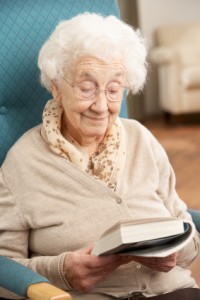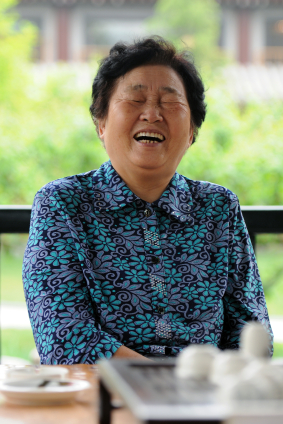Category: Dementia
Posted by Dr. El - April 3, 2014 - Business Strategies, Common Nursing Home Problems and How Psychologists Can Solve Them, Dementia, McKnight's Long-Term Care News, Role of psychologists

Here’s my latest article on McKnight’s Long-Term Care News:

I watched with dismay as the nurse abruptly moved a table in front of a confused and agitated resident trying to leave the dining room. “Sit down!” she told him in a stern voice. “Dinner will be here in an hour!”
Those of us in long-term care have undoubtedly witnessed similar incidents where residents become agitated and staff members don’t have the tools to prevent or manage their distress. Psychologists — who could offer such tools — are largely limited in the current reimbursement model to providing individual services to cognitively intact residents.
Using mental health expertise
The Eldercare Method, developed by psychologist Kelly O’Shea Carney, PhD, CMC, executive director at the Phoebe Center for Excellence in Dementia Care in Pennsylvania, harnesses the training of mental health professionals to successfully address the gap between what’s known in the mental health world about how to handle challenging behaviors and how they’re often managed in long-term care.
The method uses interdisciplinary teams facilitated by mental health professionals (psychologists and licensed clinical social workers) to examine the causes of resident distress and to identify ways to prevent it. Team members include representatives from the nursing department and other direct care staff such as dietary, housekeeping, and aides.
Needs assessment
The first step in the Eldercare Method is to assess the overall behavioral health needs of the facility and to establish training programs and annual service goals. This dramatically increases the focus on behavioral health as compared to facilities that provide behavioral health training sporadically, often after an incident occurs, missing the opportunity to prevent problems on an ongoing basis.
For the entire article, visit:

Kelly O’Shea Carney, PhD, CMC

Posted by Dr. El - March 11, 2014 - Dementia, Inspiration, Something Good About Nursing Homes, Videos

Many readers are familiar with people with dementia who want to “go home” when staff members leave at the end of their shifts or who “shop” for belongings in the drawers of other residents. It can be challenging for staff to redirect individuals intent upon leaving and upsetting for the people who are being prevented from going where they want to. “Shopping” is likely to irritate those whose dressers are being ransacked, creating ill will between neighbors on the floor.
In the Netherlands, a facility called Hogewey or “Dementia Village,” has created an entire town set up for residents with severe dementia. They’re encouraged to wander and shop and can spend the afternoon outside, coming home at the end of the day. Their homes have different lifestyle themes, such as culture or crafts or religion, increasing the chances that elders will be living with others that share their interests.
Below is a video from CNN about Dementia Village:
http://youtu.be/LwiOBlyWpko

Dementia Village
Posted by Dr. El - October 24, 2013 - Dementia, Engaging with families, Resident care

In the long-term care setting, we are often called upon to make difficult decisions on behalf of our elders with dementia. Some choices, such as refusing medical care, necessitate a capacity evaluation by a licensed and trained professional. Other decisions are made every day by staff and family members who desire to allow the resident autonomy yet need to keep them safe.
Today’s post is by clinical bioethicist Viki Kind, MA who discusses the use of the shared decision-making model to help residents with dementia and their families make decisions regarding care.

Viki Kind, MA, KindEthics.com
Many caregivers struggle with knowing when and how much to step in to protect the person in their care. It is especially difficult when the person is in the early stages of Alzheimer’s or dementia. As a clinical bioethicist, I have unique tools and strategies to help family caregivers navigate these difficult situations.
The Shared Decision Making Model is one of the tools I teach in my book, The Caregiver’s Path to Compassionate Decision Making: Making Choices for Those Who Can’t. This tool can be used to determine how much your loved one should participate in his or her important life and health decisions. With this tool, you can adjust this process to fit your loved one’s mental abilities as he or she changes over time. If your loved one has fluctuating capacity, you will need to adjust the age range as your loved one’s condition changes each day.
The Shared Decision Making Model states that we should include people in the decision-making process based on their mental age. Whether you estimate your loved one’s mental age or the doctor has given you an approximate age, your answer will fit into one of the following categories. These age ranges will help guide you as you begin to use the Shared Decision Making Model.
Zero to six years old
Seven to thirteen years old
Fourteen to seventeen years old
The way you figure out what your loved one’s mental age is by thinking about what a child would be allowed to do at different ages. (I am never saying that your loved one is a child, it is just a way to imagine how his or her abilities and needs have changed.) Would you leave the person home alone? Would you let them use a knife to butter their bread? Would the person be able to call 911 if there was a fire? Is the person able to remember enough details in order to make an informed and well thought out decision?
Most family caregivers I know either already have an idea of their person’s mental age or can figure it out when thinking about it in these terms. If you are a professional in a nursing facility, you will be able to evaluate for this as you get to know the resident.
And you don’t have to know exactly because these are age ranges, not absolute rules. You can adjust the age ranges up or down a little bit, but be careful about moving the mental age too much or you might end up using the tool in the wrong way.
Here are the basic guidelines of the Shared Decision Making Model. If the person in your care is in the zero-to-six-year-old age range, you will need to make the decisions for him or her because it wouldn’t be safe for the individual to participate in important decisions. If the person is in the seven-to-thirteen-year-old age range, he or she will be able to have a voice in some decisions but will not make the final decision. If the person is in the fourteen-to-seventeen-year-old age range, the individual may have enough capacity to make his or her own decisions.
The second tool that works with the first tool is the Sliding Scale for Decision Making which reminds us that the more dangerous or consequential the decision, the more mental capacity the person needs to have to be including in the decision making process. You wouldn’t allow someone who is six-years-old mentally to choose which nursing facility is right for him but you might allow someone who is mentally sixteen to make the decision or at least share in the decision-making process.
At the same time, you would allow the person who is mentally six to have the power to decide if he would like which activity he would like to attend because that isn’t a serious or important decision to make. The value of this process is it includes and empowers this person to have some control in their life, even when the more major decisions have been made for him.
With these two tools working together, you can evaluate the seriousness of the situation and if the person’s mental capacity changes, you can adjust how much he should participate in the decision-making process. In the nursing facility setting, these tools can give the professional caregiver the confidence to step in when necessary and to step back when it is not a very serious decision and the resident has enough mental ability to make the decision. Caregivers have told me that these strategies have reduced conflicts and improved patient-centered care.
Decision-Making and Dementia: Conversation with Viki Kind, MA
This 40-minute audio is designed for facilities and staff members wishing to learn more about using the Shared Decision-Making Model to address challenging decisions in the long-term care environment. Listeners will learn:
- Ways facilities can help families make decisions on behalf of their loved ones
- How to balance fall prevention with the resident’s desire to walk
- Ways to make good discharge decisions for residents with dementia
- The qualities of an effective ethics committee
- And more
Instant Download: Only $10.99
 Audio includes 5 FREE helpful decision-making resources!
Audio includes 5 FREE helpful decision-making resources!
Posted by Dr. El - October 7, 2013 - Communication, Dementia, For Families

This article for families visiting relatives with dementia in long-term care appears as a guest post on Deborah Shouse Writes where Deborah Shouse, author of Love in the Land of Dementia, offers advice and support for families along their caregiving journey.

It wasn’t just an ordinary visit. I walked into the long-term care facility and made my way to the memory care unit. I paused in front of the locked door, pulled a crumpled scrap of paper out of my pocket and tapped the entry code into the keypad. As I walked to my mother’s room, her new home, I felt sad, confused and guilty. How was I going to connect with my mom in this strange new environment?
Eleanor Feldman Barbera, PhD, author of The Savvy Resident’s Guide, has 16 years of experience as a psychologist in long-term care and understands the emotions and confusions family or friends might feel when visiting in a long-term care facility. Here are her tips for having a meaningful connection.
Seven Tips for Visiting a Loved One in a Long-Term Care Facility
Many families find it stressful to visit their loved ones in long-term care, especially if dementia has changed their usual ways of relating. Here are seven ways to make the most of your visits:
- Help the room feel like home by bringing photos and bedspreads, creating an environment that feels more comfortable and familiar to your relative and more pleasant for you to visit. Labeling the photos with names (such as “Oldest son, Sam”) provides reminders in your absence and clues for the staff that are with your loved one daily.
-
Turn off the television or radio and close the door during your time together. When the room is quiet and free of distractions, it’s easier for someone with dementia (and for those with hearing loss) to focus on their visitors.
For the entire article, visit:
Posted by Dr. El - August 22, 2013 - Dementia, For Families, Senior Care

Here’s my first article for SeniorCare.com:

4 Simple Ways Families Can Make a Difference During a Long-Term Care Stay
When your mom or dad is in a long-term care home—whether it’s for rehab or a longer stay in a nursing home or assisted living—it’s a big adjustment for the whole family. Nerves are often frayed from dealing with major decisions during a medical crisis, and it’s likely you’re concerned about your loved one getting proper care.
While certain aspects of the situation are frustratingly out of your control, there are some steps you can take to make your loved one more comfortable and their time in the home more rewarding.
1. Attend the Care Plan Meeting
Early on in your parent’s long-term care stay and periodically thereafter, there will be a meeting to discuss how treatment is going and what adjustments are needed. This is the single most important time for a family member to be at the nursing home (or to connect via conference call or video chat). Key people from each department are gathered to discuss how Mom or Dad is faring, so this is your best opportunity to raise concerns and have them addressed and written into the plan of care.
2. Bring food from home
Of all the complaints I’ve heard as a nursing home psychologist, among the most common is one about the food. Of all the compliments mentioned about family visits, the highest praise is reserved for a visit followed by the comment, “And they brought me something to eat.” Give mom or dad a break from the facility kitchen by bringing in a special treat – and be sure to check with the dietician or nurse first to be sure it meets with dietary guidelines. If your parent is on a chopped diet due to swallowing difficulties, for example, the kitchen may be able to chop up the food so it’s safe or the dietician can recommend foods that are already sized appropriately.
3. Set up a chain of contacts
Admission to a long-term care setting is a hectic time and often one family member takes the lead in keeping track of the situation. To reduce the pressure on the one family member and to increase the number of social supports for mom and dad, consider giving more structure to the help offered by friends, neighbors, and relatives. For example, one friend, neighbor, and relative might be designated to call others, so that the lead family member only has to contact three people in order to start the chain of support. Or a schedule can be created for calls, visits, and outside meals. With four people on the schedule each taking a week, your loved one can be assured of weekly contacts while the helpers are responsible on a manageable once-a-month basis.
4. Bring photos and other mementos
Even for a brief stay, having a family photo on the table can be hugely reassuring for a resident, reminding them of who they are, who they’ve been, and that there are people who care about them. It reminds the staff too, and gives them an inkling of whom they’re helping. Remember to bring a copy of a photo and not a precious original and to label everything. Other ideas: a picture of your loved one in their younger days, a quilt or blanket to make the room homey, and a telephone programmed with frequently called numbers.
Posted by Dr. El - April 17, 2013 - Dementia, Depression/Mental illness/Substance Abuse, McKnight's Long-Term Care News, Resident care


Here’s my latest column at McKnight’s Long-Term Care News:
I was hoping not to have occasion to write another column about tragedy so soon, but the terrible events at the Boston Marathon have prompted another look at how we deal within our facilities with distressing news.
In my previous article, Helping Your LTC Community Cope in the Wake of Hurricane Sandy, I offer post-disaster recommendations that are applicable in this situation. In this column, I focus on the amount of information we provide to residents about distressing outside events.
Sandy Hook
An aide was the first person who informed me about the shootings at Sandy Hook Elementary School last December, calling me into the dining room to see the news broadcast. “Children,” she said, “just little children. This is awful.” The TV was filled with images of horror and the dining room was filled with residents, all of who were in wheelchairs or recliners and most of whom had dementia. They were more or less trapped in there, watching repetitive distressing reports of a vulnerable population being inexplicably attacked.
Many residents talked about the children in their psychotherapy sessions that week. Staff members stopped me in the halls to comment and to be heard and comforted by the psychologist. My daughter is six years old, the same age as most of the Sandy Hook victims. I was present at work as needed and at home I skimmed the headlines and tried not to read the details.

Posted by Dr. El - March 26, 2013 - Business Strategies, Customer service, Dementia, McKnight's Long-Term Care News, Resident care


Here’s my latest column at McKnight’s Long-Term Care News:
Secrets to making your environment ’emotionally healing’
Back when I worked in psych, one of our most effective tools to improve mental health was maintaining a healing emotional environment, or therapeutic milieu. That’s why I was shocked when I first entered long-term care.
I couldn’t believe the din that faced me on the floors or the way some people spoke to the residents or the lack of coordination of care. In some ways, the settings are so similar —inpatient care, short- and long-term stays, family involvement, treatment teams, etc. — but the focus on physical versus mental health creates completely different atmospheres.
The reality is that even though our residents are entering LTC due to physical problems, their medical troubles impact their mental health and vice versa.

Posted by Dr. El - June 8, 2010 - Dementia, Psychology Research Translated, Resident care
Recent psychology research* showed reduced levels of agitation in nursing home residents with dementia, some to the point of not being considered agitated at all.
This promising study used a structured yes/no list to find the types of activities the residents found pleasurable either now or in the past, such as listening to jazz music or spending time with family members. The researchers presented participants with paired choices of desirable objects, such as different colored balloons or fabric. They also examined the times and reasons the residents appeared to be agitated, such as an apparent need to “escape” during the busy change of shift.
One resident wandered and jiggled the doorknobs of the rooms of other residents when he was left alone. Giving him his preferred objects (jazz music on a CD walkman, purple fabric, etc) significantly reduced his agitation. The resident who became agitated during busy times needed to be presented with her preferred objects (a family photo album, a felt flower, etc) before she became agitated and difficult to engage, but she also showed a dramatic improvement in behavior.
While readers might not use all the elements of this study simultaneously, there are many aspects that can be incorporated into our daily routines.
For further information:
*Based on the research study,
Applications of Preference Assessment Procedures in Depression and Agitation Management in Elders with Dementia, by Leilani Feliciano, PhD, Mary E. Steers, MA, Alexandra Elite-Marcandonatou, LCSW, Maura McLane, MA, and Patricia A. Areán, PhD,
Clinical Gerontologist, 32:239-259, 2009.

What I’ll want to look at.
Posted by Dr. El - May 5, 2010 - Dementia, Engaging with families, Tips for gifts, visits

Dr. Green suggests simplifying previously enjoyed activities to the point where they’re manageable, but not childish. Using a calm approach in a quiet setting, and shifting activities if your relative becomes frustrated will lead to better results. New Old Age readers added the following suggestions:
- Doing jigsaw and crossword puzzles for puzzle enthusiasts, especially personalized ones such as a crossword about favorite subjects or events, or a jigsaw made from a family photo
- Sorting through Grandmother’s button collection, letting her describe each button and the memories it triggers
- Winding or sorting skeins of yarn for knitters and crocheters
- Being in calm and silent companionship rather than finding the need to fill the space
- Reviewing and discussing garden catalogs for former gardeners
- Reading Erma Bombeck columns
- Positive reminiscing, steering clear of painful memories and otherwise going with the flow
- Singing the first line of a well-known song and lettting the resident come up with the next line (New York, New York, a helluva town)
Posted by Dr. El - April 25, 2010 - Anecdotes, Boomers, Dementia, Role of psychologists, Technology, Tips for gifts, visits

Now that I know I’m not going against State regulations (see Dr. El Goes Undercover with the NYS Department of Health), I’ll confess I love to use my iPhone with the residents. In nursing homes that don’t yet have computer access, the iPhone and other web-enabled mobile devices bring the world right to the residents. (For more on the subject, see Therapeutic Use of the Internet in Nursing Homes.)
Here are some therapeutic interventions I’ve used during my psychology sessions. Please add your experiences in the Comments section.
- When I arrived at the door of his room, Jim was sitting with his head in his hands. He looked up and I saw the worry in his eyes. “What’s up?” I asked him. He said, “I put all my stuff in storage before I got here, but now I can’t remember the name of the place. I’m worried I’m gonna lose my things.” Pulling out my iPhone, I Googled the storage center based on the general location, and handed him the phone number. Relieved, he was able to discuss his other concerns. When I ran into him later in the day, he’d phoned, made arrangements for his belongings, and was now smiling and relaxed.
- “My old doctor gave me different medication,” Ms. Garcia told me. “I never had this problem before.” “Do you have your doctor’s phone number? Maybe your old physician could talk to your doctor here.” “I don’t have the number. But I know her name.” After a quick search and a couple of phone calls, Ms. Garcia was on the phone with the MD she’d had for the last fifteen years. “Hey!!! How you doing??? Listen, can you call my doctor here and tell him about me?” Two days later, the MDs had conversed, the meds had been changed, and the problem was solved.
- Ana’s usually energetic demeanor had faded and my attempts to engage her were met with glum, monosyllabic replies. I switched gears. “Would you like to listen to music? We could play some of your native Romanian songs.” She was unenthusiastic until my YouTube search came up with the Romanian Ballad of Ciprian Porumbescu. Her face lit up and she listened intently, eyes closed, appearing to drink in the music. “He is very famous in my country,” she told me, and when the ballad concluded, she reminisced about her past, revealing more about her youth than she had in our previous three months of psychotherapy.
- Once I worked briefly with a man who was new to the nursing home and appeared lost. Trying to anchor him, I asked if he had any hobbies. “Irish dancing,” he told me. I searched for Irish dance music in YouTube and found a video of some Riverdance-type performers. His eyes brightened and, from his wheelchair, his feet jumped and pranced with remarkable skill. From the knees down, he was a Riverdancer; from his neck up, he was a happy man. After this intervention, I spoke to his children and asked them to bring him a CD player and some Irish music, and also shared the information with his recreation therapist so she could play his music on the unit.




















